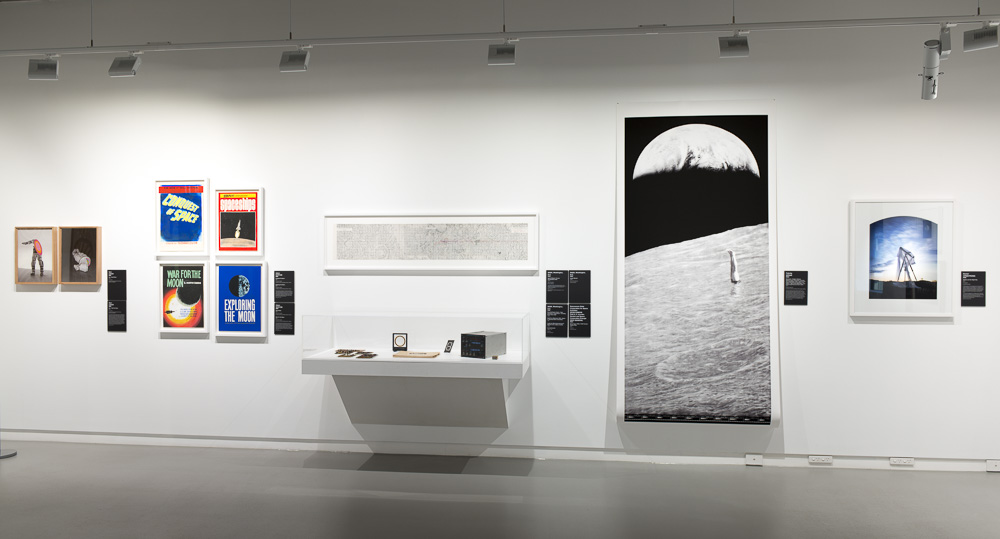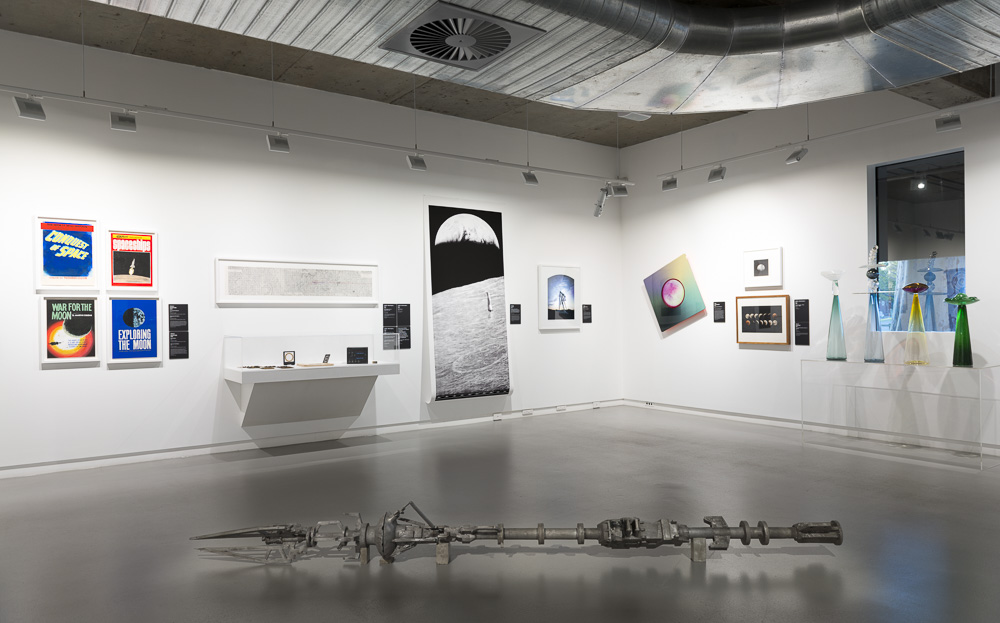Space
50 years since man first stepped on the Moon
20 July – 1 September 2019
Gippsland Art Gallery
A group exhibition curated by Erin Mathews

Felicity Spear: Somnium—Kepler’s Dream
Credit: NASA/LORP
Details of Work
- Title: Somnium – Kepler’s Dream
- Date: 2016
- Dimensions: image 100 x 219 cm; sheet 110 x239 cm
- Medium: pigment inkjet print
(Original images - Diving Man - Denmark, 2014, photograph F. Spear. Restored: First Image of the Earth from the Moon, Lunar Orbiter 1, 1966, Credit: NASA/LORP. Lunar Orbiter Image Recovery Project, 2008.)


Notes on Somnium–Kepler’s Dream
The image of a human diving into the moon reminds me of the compulsive curiosity within human animals to push beyond boundaries and escape their inexorable Earthbound fate. In search of what? Proof, adventure, power, greater knowledge, simply to fly free or as the astronomer John Barrow suggests, because ‘we feel like the Universe’s only child’.
One of the images that has remained with me since the 1960’s is the French artist Yves Klein’s photomontage, Leap into the Void subtitled Man in Space! The Painter of Space Throws Himself into the Void! In 1957, with the launch into orbit of Sputnik, the first man-made satellite to circle the Earth, space flight had spectacularly overcome the laws of gravity. Klein’s evocative image revived memories of humans’ earlier attempts to fly, while also looking towards the future in the hope of new and imaginative potentials for human culture, art and science. By 1969 Apollo 11 had taken humans to the Moon and Klein had opened up new terrain for an art of pure imagination and new modes of creativity. The sixties were exciting as the world emerged from darker times.
My print Somnium–Kepler’s Dream revisits the historical and celebrated image, the first image of the Earth seen from outer space, which was captured by NASA’s Lunar Orbiter 1 in 1966 when searching for a suitable landing site on the Moon for the proposed Apollo 11 expedition. Described at the time by the press as ‘the image of the century’ it has now been restored using new technologies by National Aeronautics Space Administration, NASA, and the Lunar Orbiter Image Recovery Project, LORP. Into this photograph I superimposed one of my own photographic images. It is a person diving into the sea that I captured quickly and coincidentally from a window in the Louisiana Museum of Modern Art on the shore of the Øresund Sound in Denmark. Denmark was the home of the celebrated naked-eye astronomer Tycho Brahe with whom the 17th-century German mathematician and astronomer Johannes Kepler studied at Brahe’s observatory at Uranienborg.
Kepler was a key figure in the scientific revolution, establishing his revolutionary theories of the elliptical orbits of planetary motion. He straddled two worlds of thinking: the rational and the mystical. His book Somnium (The Dream), is regarded as paving the way for the science fiction genre. It was in fact a guide for an adventurous lunar expedition from planet Earth describing the imagined places and conditions which might be encountered on this journey. Secreted within in the story was also the scientific research which supported the Copernican view of a heliocentric universe, a still controversial notion at the time. Kepler’s ideas are still prescient today, vital to the knowledge which enabled humans to walk on the Moon in the 20th century.
Kepler’s Somnium brings the physical universe to life through the lens of history and science and is celebrated for its imagination and foresight in travelling beyond the known boundaries. Both Kepler and Klein, scientist and artist, were able to imagine the future through both the rational and the mystical.
Felicity Spear – June 2019